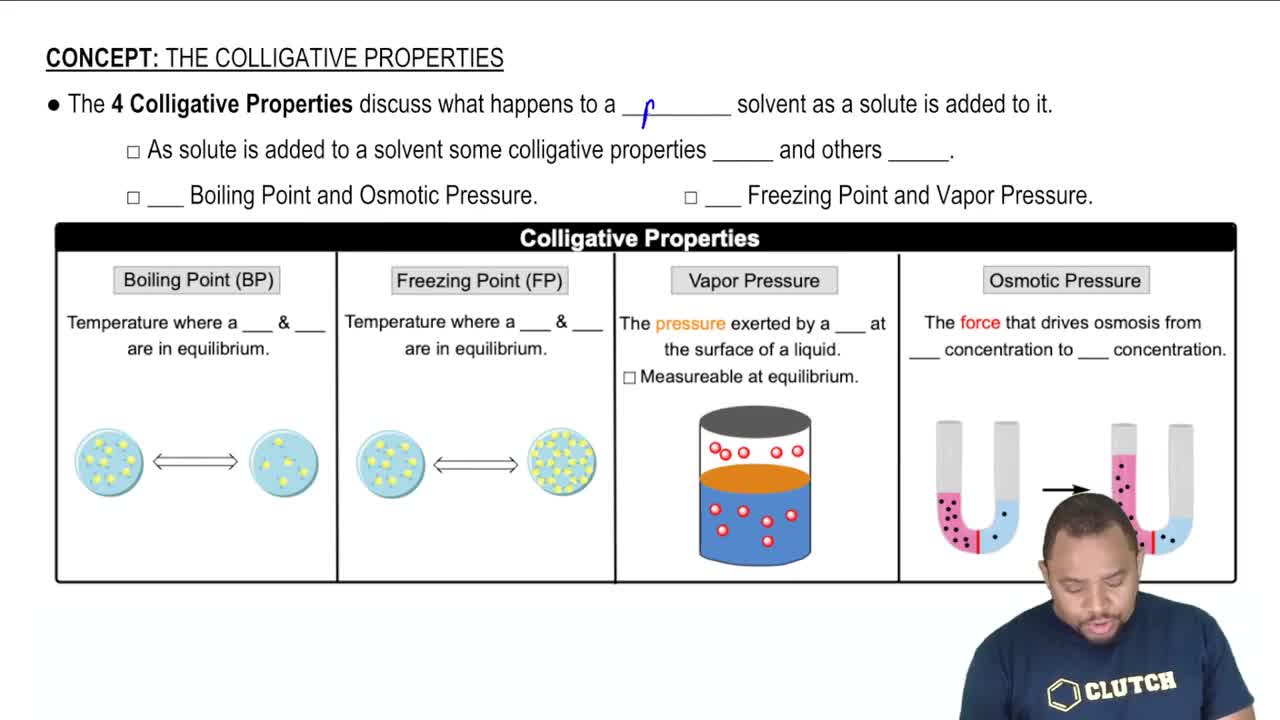Here are the essential concepts you must grasp in order to answer the question correctly.
Solvent Properties
The choice of solvent significantly impacts the environmental footprint of a chemical process. Water is often considered a greener solvent due to its non-toxic nature, abundance, and ability to dissolve a wide range of substances. In contrast, benzene is a volatile organic compound that poses health risks and environmental hazards, making water the preferable choice in terms of sustainability.
Recommended video:
Reaction Temperature and Energy Efficiency
The temperature at which a reaction occurs affects both the energy consumption and the rate of the reaction. Higher temperatures, such as 1000 K, typically require more energy input, which can lead to increased greenhouse gas emissions if fossil fuels are used. Conversely, lower temperatures, like 500 K, are generally more energy-efficient and environmentally friendly, making them a greener option.
Recommended video:
By-products and Environmental Impact
The nature of by-products generated in a chemical reaction can greatly influence its overall environmental impact. Sodium chloride is a common, relatively benign by-product that can be easily managed and disposed of. In contrast, chloroform (CHCl3) is a hazardous substance with potential health risks and environmental concerns, making sodium chloride the greener choice in this context.
Recommended video:
Production of Hydrogen Example




